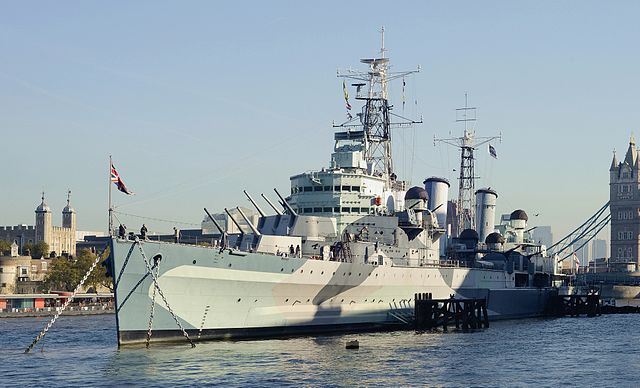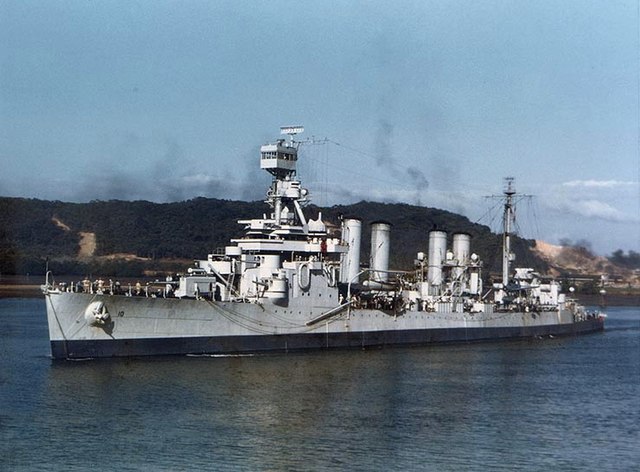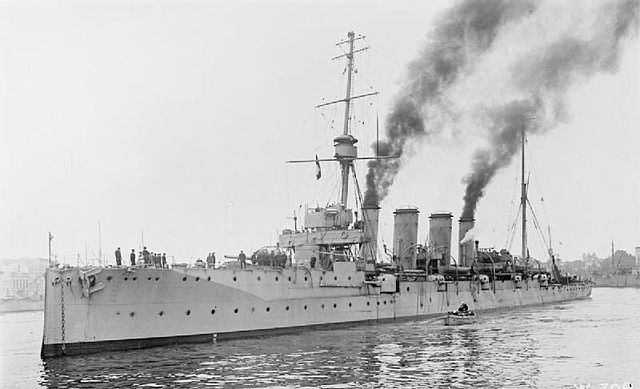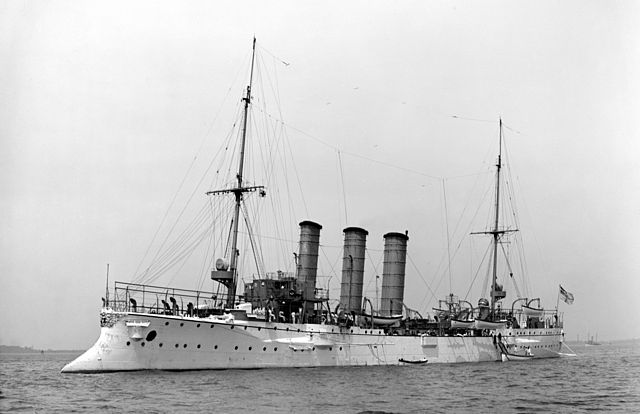The Omaha-class cruisers were a class of light cruisers built for the United States Navy. They were the oldest class of cruiser still in active service with the Navy at the outbreak of World War II, being an immediate post-World War I design.
USS Concord in 1943
1942 ship recognition chart for the Omaha class
A light cruiser is a type of small or medium-sized warship. The term is a shortening of the phrase "light armored cruiser", describing a small ship that carried armor in the same way as an armored cruiser: a protective belt and deck. Prior to this smaller cruisers had been of the protected cruiser model, possessing armored decks only. While lighter and smaller than other contemporary ships they were still true cruisers, retaining the extended radius of action and self-sufficiency to act independently around the world. Cruisers mounting larger guns and heavier armor relative to most light cruisers would come to be known as heavy cruisers, though the designation of 'light' versus 'heavy' cruisers would vary somewhat between navies. Through their history light cruisers served in a variety of roles, primarily as convoy escorts and destroyer command ships, but also as scouts and fleet support vessels for battle fleets.

HMS Belfast, one of the last surviving light cruisers. She carries 12 6-inch guns and displaces 11,553 tons – "light" in World War II referred to gun size, not displacement.
HMS Mercury
HMS Gloucester, one of the Town class, in 1917
SMS Bremen






